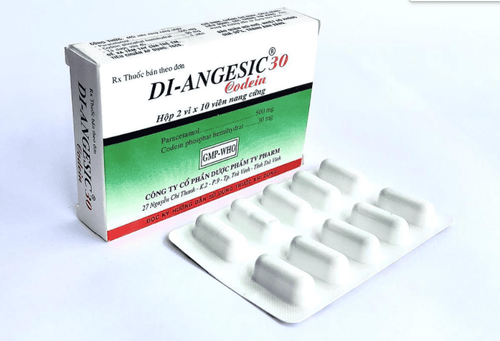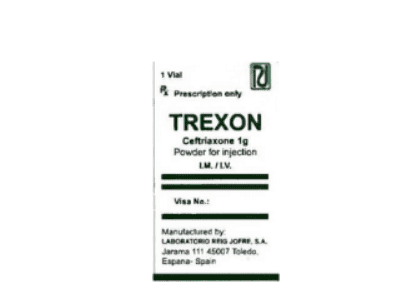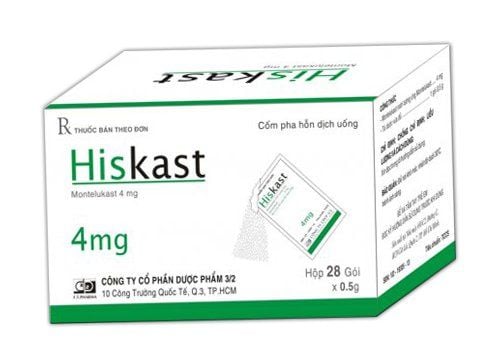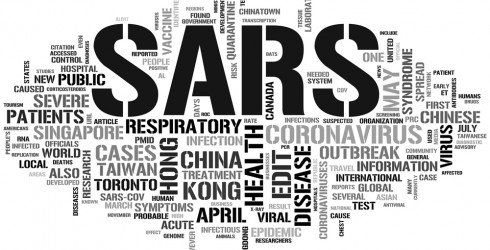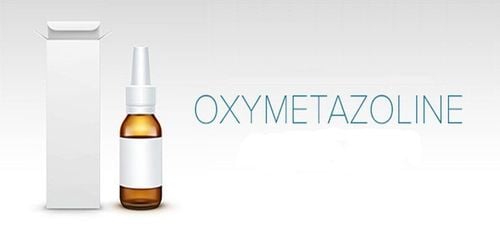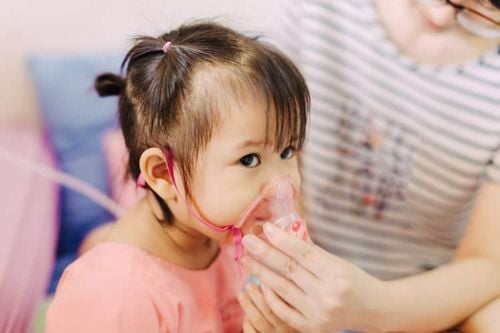This is an automatically translated article.
The article was professionally consulted with Doctor Vo Ha Bang Suong - Therapist - Department of Medical Examination & Internal Medicine - Vinmec Phu Quoc International General Hospital.SARS is a severe acute respiratory distress syndrome in the form of severe pneumonia. Without prompt treatment, SARS can be fatal. In particular, the disease spreads quickly through the respiratory tract, which can form a SARS epidemic if not well controlled.
1. What is SARS?
Severe acute respiratory syndrome (SARS) is a severe form of pneumonia. The disease first appeared in China in November 2002 and quickly spread to 29 countries worldwide within just a few months. The SARS epidemic was characterized by rapid spread and high mortality. In the 2003 epidemic, 8,422 people were infected and 916 people died (mortality rate 11%).It is estimated that 90% of people infected with SARS can recover, but if not treated, the patient will die. Therefore, countries have promoted propaganda on prevention methods, signs to recognize the SARS epidemic, diagnostic methods and recommendations for patient isolation to control the epidemic. By July 2003, the outbreak of SARS ended and since 2004 there have been no cases of the disease.
2. Causes of SARS
The cause of the disease is the corona virus. This is a virus with a diameter of 60 - 130 nm, the surface of the virus has glycoprotein spikes like a crown. The corona virus can live outside the body for many hours, remaining in feces and urine at room temperature for at least 1-2 days, even up to 4 days. At 0°C, the virus can survive for up to 3 weeks. This feature makes the corona virus capable of spreading strongly from one person to another and easily developing into an epidemic. However, they are inactivated by chlorine inhibitors within 5 minutes, lose their infectious activity if exposed to common biocides, and can be killed at 56°C.Coronaviruses are enveloped RNA viruses that cause respiratory illnesses of varying severity from the common cold to fatal pneumonia.
Numerous coronaviruses, first discovered in poultry in the 1930s, cause respiratory, gastrointestinal, liver and neurological diseases in animals. Only 7 coronaviruses are known to cause disease in humans.
Four of the 7 coronaviruses most frequently cause common cold symptoms. Coronaviruses 229E, OC43, NL63, and HKU1 cause about 15 to 30% of cases of the common cold. Rarely, severe lower respiratory tract infections, including pneumonia, may occur, mainly in infants, the elderly, and immunocompromised patients.
Three of the 7 coronaviruses cause much more severe and sometimes fatal human respiratory infections than other coronaviruses and have caused deadly pneumonia outbreaks in the 21st century:
SARS-CoV2 is a novel coronavirus identified as the cause of coronavirus disease 2019 (COVID-19) that began in Wuhan, China in late 2019 and spread worldwide. MERS-CoV was identified in 2012 as the cause of Middle East respiratory syndrome (MERS). SARS-CoV was identified in 2002 as the cause of an outbreak of severe acute respiratory syndrome (SARS).

SARS coronavirus (SARS-CoV)
3. Transmission properties
This group of coronaviruses that cause severe respiratory infections are zoonotic agents that begin in infected animals and spread from animals to humans. SARS-CoV2 has a significant degree of person-to-person transmission.Natural pathogens are known to be common in many different animal species, including camels, cattle, cats and bats, and are transmitted to humans. The route of transmission is the respiratory route (from droplets of secretions through sneezing, speaking, breathing), direct contact (phones, doorknobs), nebulizers, bronchoscopes, and waste products. , the waste of patients infected with SARS. Sensory Body: All bodies are susceptible to disease.
4. Symptoms of SARS patients
The incubation period for SARS is from 2 to 7 days, which can last up to 12 days. The disease progresses through 2 stages (2 phases):First phase: The patient usually has a fever above 38°C, chills, red face, rapid pulse, fatigue, headache, body aches, muscle aches, maybe pain around orbital and peripheral lymphadenopathy,... Some patients have diarrhea and upper respiratory infection
Later phase (respiratory phase): Symptoms of respiratory failure appear from the 3rd to 5th day of illness, mainly dry cough (sometimes cough with phlegm), shortness of breath. Severe progressive respiratory failure in a very short time.
The disease can cause complications like bronchitis, pneumonia, necrotizing enterocolitis, encephalitis, acute respiratory failure and acute kidney failure,... People with SARS are likely to die if they are elderly and have chronic diseases. (chronic lung disease, chronic liver disease, cardiovascular disease, diabetes), atypical symptoms, elevated blood LDH levels and acute renal failure. Prognosis is better in younger people.
5. Diagnosis of SARS
5.1. Diagnosis based on epidemiology
Travel to areas with cases of SARS within 10 days prior to symptoms, or direct contact within 10 days nearby with people who have had the above symptoms and traveled to the affected area .5.2. Clinical symptoms
Sudden onset, average time 7 days after exposure to source of infection Continuous high fever above 380C. Sometimes chills, red face, rapid pulse, headache, body aches, pain around the eye socket and peripheral lymphadenopathy. Respiratory symptoms with one or more of the following: Cough (usually dry cough, some cases with sputum when superinfected), shortness of breath, respiratory failure, auscultation may have many rales.5.3. Subclinical
Chest X-ray: Shows diffuse interstitial kidney infection, which is a characteristic sign of acute respiratory failure; localized pulmonary coagulopathy may occur; CT-scan of the chest: Helps to detect lung damage early when X-rays have not been detected. In severe cases, CT-scan can detect cysts less than 1cm in diameter, pneumothorax and pneumomediastinum; Complete blood count: Peripheral white blood cell count is normal, may be slightly decreased; granulocytosis and thrombocytopenia in the latter phase. ELISA test and Immunofluorescence Analysis (IFA) help detect antibodies in the patient's blood, assess the status of being infected with the SARS virus. Polymerase chain reaction (PCR) helps to detect the genetic material of the SARS virus which can be applied in early diagnosis of the disease. Differential diagnosis of SARS with common seasonal flu, Influenza A-H1N1 and some other respiratory diseases such as lung abscess, lobar pneumonia, interstitial pneumonia, bronchopneumonia, bacterial nasopharyngitis, encephalitis due to viruses...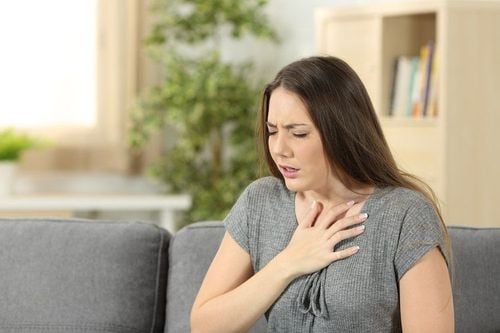
Sau khi xuất viện, bệnh nhân cần tự theo dõi nhiệt độ 12 giờ/lần
6. Treatment of SARS
6.1 Principles of Treatment All confirmed cases of SARS require hospitalization and complete isolation. The patient should be treated in an intensive care unit as soon as possible. Currently, there is no specific treatment for SARS, so it is mainly used to relieve symptoms, detect and promptly treat respiratory failure.6.2. Treat the cause of the disease If treated early with antiviral drugs and steroids, most patients can recover.
According to the guidance of the Ministry of Health of Vietnam:
Antiviral drugs: Ribavirin can be used 800mg/day, up to 1200mg/day (according to body weight), divided into 3-4 times/day, 7-10 days. Treatment of bronchial and pulmonary superinfections: Use broad-spectrum 3rd generation Cephalosporin antibiotics or new generation Quinolones, in combination with an aminoside drug. 6.3. Symptomatic treatment Use cough suppressants if there is a severe dry cough; nose drops with regular nasal drops. If the fever is over 38.5oC, give Paracetamol 4 times a day. Dosage: adults 2 g/day, children 50-60 mg/kg body weight/day.
6.4. Nutrition, correcting fluid and electrolyte disturbances Ensure adequate nutrition for the patient; Drink lots of fruit juice. Intravenous infusion of solutions of Sodium Chloride 0.9%, Glucose 5%, Ringerlactate. The amount of fluid to be infused depends on the clinical course and electrolytes. Alternatively, intravenous amino acid solutions may be given.
6.5. Adjunctive therapy Use intravenous methylprednisolone at a dose of
1 mg/kg/day in the presence of respiratory failure, infection, or severe intoxication. Use until signs of respiratory distress subside, but not more than 5 days.
Can use intravenous Gammaglobulin at a dose of 200-400 mg/kg (single use only), or use albumin.
6.6. Treatment of respiratory failure Support oxygenation through a nasal cannula, mask, intubation or ventilator.
6.7 Discharge criteria * The patient is transferred to the buffer zone when the following criteria are met:
No fever for at least 5 days without antipyretic drugs. Cough is over. In good condition, eating and sleeping normally. Pulse, blood pressure, breathing rate, blood tests returned to normal; Chest X-ray improved. * After 7 days of treatment at the buffer zone, if the patient's health condition is stable, the patient will be discharged. After that, they have to re-examine at the place of treatment and take weekly x-rays until the lungs return to normal. During this time, the sick person needs to stay at home, not go to public places.
In addition, after being discharged from the hospital, the patient must self-monitor their temperature every 12 hours, if the temperature is higher than 38oC in two consecutive measurements or there are other abnormal signs, they must return to the place of examination immediately. treatment.
Please dial HOTLINE for more information or register for an appointment HERE. Download MyVinmec app to make appointments faster and to manage your bookings easily.




